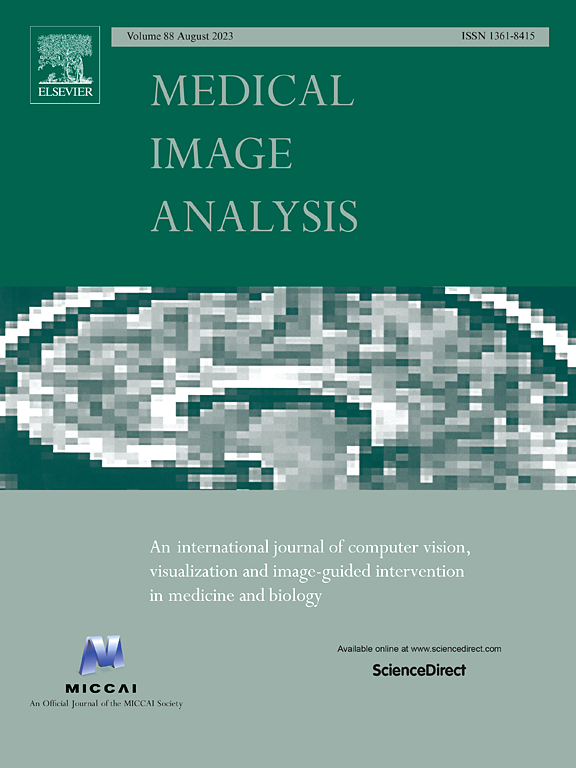RED: Residual estimation diffusion for low-dose PET sinogram reconstruction
IF 10.7
1区 医学
Q1 COMPUTER SCIENCE, ARTIFICIAL INTELLIGENCE
引用次数: 0
Abstract
Recent advances in diffusion models have demonstrated exceptional performance in generative tasks across various fields. In positron emission tomography (PET), the reduction in tracer dose leads to information loss in sinograms. Using diffusion models to reconstruct missing information can improve imaging quality. Traditional diffusion models effectively use Gaussian noise for image reconstructions. However, in low-dose PET reconstruction, Gaussian noise can worsen the already sparse data by introducing artifacts and inconsistencies. To address this issue, we propose a diffusion model named residual estimation diffusion (RED). From the perspective of diffusion mechanism, RED uses the residual between sinograms to replace Gaussian noise in diffusion process, respectively sets the low-dose and full-dose sinograms as the starting point and endpoint of reconstruction. This mechanism helps preserve the original information in the low-dose sinogram, thereby enhancing reconstruction reliability. From the perspective of data consistency, RED introduces a drift correction strategy to reduce accumulated prediction errors during the reverse process. Calibrating the intermediate results of reverse iterations helps maintain the data consistency and enhances the stability of reconstruction process. In the experiments, RED achieved the best performance across all metrics. Specifically, the PSNR metric showed improvements of 2.75, 5.45, and 8.08 dB in DRF4, 20, and 100 respectively, compared to traditional methods. The code is available at: https://github.com/yqx7150/RED.
RED:低剂量PET图像重建的残差估计扩散
扩散模型的最新进展在各个领域的生成任务中表现出了卓越的性能。在正电子发射断层扫描(PET)中,示踪剂剂量的减少会导致图中信息的丢失。利用扩散模型重建缺失信息可以提高成像质量。传统的扩散模型有效地利用高斯噪声进行图像重建。然而,在低剂量PET重建中,高斯噪声会通过引入伪影和不一致性而使本已稀疏的数据恶化。为了解决这个问题,我们提出了一个名为残差估计扩散(RED)的扩散模型。RED从扩散机理出发,利用正弦图间残差代替扩散过程中的高斯噪声,分别将低剂量和全剂量正弦图作为重构的起点和终点。这种机制有助于保留低剂量正弦图中的原始信息,从而提高重建的可靠性。从数据一致性的角度出发,RED引入了漂移校正策略,以减少反向过程中累积的预测误差。对反向迭代的中间结果进行校正,有助于保持数据的一致性,增强重构过程的稳定性。在实验中,RED在所有指标上都取得了最佳性能。具体而言,与传统方法相比,DRF4、20和100的PSNR指标分别提高了2.75、5.45和8.08 dB。代码可从https://github.com/yqx7150/RED获得。
本文章由计算机程序翻译,如有差异,请以英文原文为准。
求助全文
约1分钟内获得全文
求助全文
来源期刊

Medical image analysis
工程技术-工程:生物医学
CiteScore
22.10
自引率
6.40%
发文量
309
审稿时长
6.6 months
期刊介绍:
Medical Image Analysis serves as a platform for sharing new research findings in the realm of medical and biological image analysis, with a focus on applications of computer vision, virtual reality, and robotics to biomedical imaging challenges. The journal prioritizes the publication of high-quality, original papers contributing to the fundamental science of processing, analyzing, and utilizing medical and biological images. It welcomes approaches utilizing biomedical image datasets across all spatial scales, from molecular/cellular imaging to tissue/organ imaging.
 求助内容:
求助内容: 应助结果提醒方式:
应助结果提醒方式:


